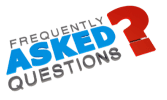Hey there, future Palantir team member! Feeling a mix of excitement and nerves about your upcoming Palantir interview? You’re not alone. I’ve helped hundreds of candidates navigate this process, and I’m here to guide you every step of the way.
What makes Palantir interviews special? Imagine working on software that helps rescue disaster victims or prevents financial fraud. Pretty amazing, right? That’s exactly why Palantir’s interview process goes beyond just checking technical boxes – they’re looking for problem solvers who can tackle real-world challenges.
What You’ll Learn in This Guide
- Exactly what to expect at each interview stage
- Insider tips for standing out
- Real interview questions and winning answers
- Time-tested preparation strategies
Ready to begin your journey? Let’s break this down into manageable steps that will boost your confidence and maximize your chances of success.
Boost Your Interview Skills Now
Improve your interview skills in under 10 minutes!
Join thousands of successful job seekers!

Making Your Application Stand Out
What Catches a Recruiter’s Eye?
Remember that time you debugged a tricky production issue or built a feature that users loved? That’s what Palantir wants to hear about. Let’s make your application impossible to ignore. Unique positions like a deployment strategist, which involves transitioning from diverse backgrounds such as education to strategic roles at Palantir, can make your application stand out.
The hiring manager plays a crucial role in evaluating applications, assessing candidates’ performances, and ensuring they are a good cultural fit within the team.
Your Resume Power-Up Checklist
- Impact Statements: Transform “Worked on database optimization” into “Reduced query response time by 60%, improving user experience for 100,000+ daily users”
- Problem-Solving Stories: Highlight challenges you’ve tackled and how you approached them
- Mission Alignment: Show you care about real-world impact through your projects and experiences
Before and After Example
❌ Weak Resume Bullet:
Implemented caching solution for web application
✅ Strong Resume Bullet:
Architected and implemented Redis caching layer that reduced load times by 75% and supported 3x user growth, while decreasing server costs by $10K/month

Crushing the Online Assessment
Your Secret Weapon: The Right Mindset
Think of the online assessment as your first mission at Palantir. You’re not just writing code – you’re showing how you think about real-world problems and demonstrating your coding abilities. This online assessment serves as a technical screen to evaluate your coding abilities and problem-solving skills.
What Makes Palantir’s Assessment Different?
Instead of abstract puzzles, expect problems that mirror actual challenges you might face on the job. Let’s look at an example:
Sample Problem Breakdown
The Challenge: Design a system to track and analyze financial transactions in real-time.
Here’s how to approach it:
class TransactionTracker:
def __init__(self):
self.transactions = defaultdict(list) # userId -> transactions
self.anomaly_threshold = 1000
def add_transaction(self, user_id: str, amount: float, timestamp: int) -> bool:
“””
Tracks a new transaction and returns True if it’s suspicious.
Why this design?
– O(1) insertion time
– Easy to extend with new anomaly rules
– Clear separation of concerns
“””
recent_transactions = self._get_recent_transactions(user_id, timestamp)
is_suspicious = self._detect_anomaly(amount, recent_transactions)
self.transactions[user_id].append({
‘amount’: amount,
‘timestamp’: timestamp
})
return is_suspicious
def _get_recent_transactions(self, user_id: str, current_time: int) -> List[dict]:
# Get transactions in last hour (3600 seconds)
return [t for t in self.transactions[user_id]
if current_time – t[‘timestamp’] <= 3600]
A strong foundation in computer science can help in designing systems to track and analyze financial transactions.
Why This Solution Shines:
- Clean, readable code
- Efficient data structures
- Real-world application
- Clear documentation
- Easy to scale and modify
Your Assessment Game Plan
Set Up Your Space
- Find a quiet spot
- Test your internet connection
- Have water nearby
- Close distracting applications
Time Management Strategy
90-Minute Assessment Breakdown:
- First 5 mins: Read ALL problems
- Next 35 mins: Solve first problem
- Next 35 mins: Solve second problem
- Last 15 mins: Review and polish
Success Mindset: You don’t need perfect solutions.
They want to see:
- Clear thinking
- Good coding practices
- Attention to edge cases
- Smart trade-off decisions
During the Assessment:
- Think aloud in comments
- Test as you go
- Document key decisions
- Start with a working solution, then optimize

Acing the Phone Interview
Stop thinking “interview” – start thinking “technical discussion with a future colleague.” This shift changes everything.
Before the phone interview, there is often a phone screen that lasts about an hour and involves a blend of technical and behavioral questions. Palantir includes a ‘learning interview’ to assess a candidate’s ability to quickly learn and adapt to new concepts.
What to Expect:
Duration: 45-60 minutes
Format: Usually starts with introductions (5 mins)
↓
Technical discussion (35-45 mins)
↓
Your questions (10-15 mins)
The Art of Technical Communication
Let’s see this in action with a real example:
“Tell me about a time you had to optimize a slow-performing system.”
❌ Weak Answer: “I optimized our database queries and made the system faster.”
✅ Strong Answer: “Let me walk you through a recent challenge at my current role. Our dashboard was taking 8 seconds to load, frustrating our users.
First, I profiled the application using New Relic and identified that 80% of the time was spent on redundant database queries.
I approached this methodically:
- Implemented query caching for frequently-accessed data
- Rewrote N+1 queries using eager loading
- Added database indexes for common search patterns
The result? Load time dropped to 2 seconds, and user complaints decreased by 90%.
Key learning: Always measure before optimizing. The actual bottleneck wasn’t what we initially suspected.“
Boost Your Interview Skills Now
Improve your interview skills in under 10 minutes!
Join thousands of successful job seekers!

The Take-Home Exercise – Your Time to Shine
Why This Stage Matters
Think of the take-home exercise as your chance to show what you can really do without the pressure of someone watching. Exciting, right? Let’s make it count! This exercise is designed to evaluate the skills and problem-solving abilities of a software engineer.
Your Secret Advantage: Unlike live interviews, you have time to plan, refine, and polish your solution. Let’s use this to your advantage!
The Winning Strategy
Day 1: Planning & Research (2-3 hours)
- Read requirements 3 times (seriously!)
- Research similar problems
- Plan your approach
- Create evaluation criteria
Day 2-3: Execution (6-8 hours)
- Build core functionality
- Add documentation
- Write tests
- Polish and refine
Day 4: Presentation (2-3 hours)
- Create readme
- Add deployment instructions
- Final testing
- Prepare walkthrough
Pro Tip: 💡 Create a DECISIONS.md file explaining your key technical choices. Reviewers love seeing your thought process!
Going Above and Beyond
What separates good submissions from great ones? Here’s your checklist:
- Clear documentation
- Comprehensive testing
- Error handling
- Performance considerations
- Future improvement suggestions
- Clean, maintainable code
- Thoughtful UI/UX (if applicable)

Mastering Behavioral Questions
The STAR Method 2.0
Forget standard STAR responses. In a behavioral interview, it’s crucial to make your stories memorable and impactful!
“Tell me about a time you disagreed with your team. How did you handle it?”
❌ Weak Answer: “I disagreed with my team about a technical decision, but we talked it out and found a solution.”
✅ Strong Answer: “Last quarter, we were deciding how to implement authentication for a critical client project. The team wanted to build our own auth system from scratch – estimated at 3 months of work.
I respectfully disagreed, believing we should use Auth0. I:
- Created a pros/cons analysis
- Built a quick prototype using Auth0
- Calculated potential cost savings ($150K in development time)
- Presented security benefits of a battle-tested solution
The key moment came when I acknowledged the team’s concern about vendor lock-in. I proposed a modular design that would make it easier to switch providers later if needed.
Result? We went with Auth0, launched 2 months early, and the client loved the robust security features. The experience taught me that addressing underlying concerns is often more effective than just arguing technical merits.“
“How do you handle tight deadlines?”
❌ Weak Answer: “I work harder and stay late to meet deadlines.”
✅ Strong Answer: “Let me share a recent example. We had 3 weeks to rebuild our analytics dashboard for a major client demo. Here’s my approach:
- First, I broke down the work into must-haves vs. nice-to-haves
- Created a daily milestone plan
- Identified potential bottlenecks early
- Set up daily 15-minute team check-ins
When we realized the custom graphs would take too long, I:
- Proposed using a pre-built library for v1
- Scheduled the custom features for v1.1
- Communicated the trade-offs to stakeholders
We delivered on time, the demo was successful, and we had a clear plan for post-demo improvements. The key lesson? Sometimes perfect is the enemy of good.“
“Tell me about your most challenging project.”
✅ Strong Answer: “Our team inherited a legacy payment processing system handling $10M daily transactions. It was unstable and unclear where to start improving it.
My approach:
- Set up comprehensive monitoring first
- Created a ‘bug diary’ to spot patterns
- Built a test environment to safely experiment
- Organized twice-weekly knowledge sharing sessions
The breakthrough came when we discovered that 80% of issues stemmed from three core components. We:
- Refactored these components first
- Maintained backward compatibility
- Gradually migrated customers
Over 6 months, we reduced errors by 90% and improved processing speed by 50%. Most importantly, we documented everything, making future maintenance easier.
The experience taught me the value of methodical problem-solving and clear communication in complex projects.“

Frequently Asked Questions

Your Journey Starts Now
Take a deep breath. You’ve prepared well. Whether this is your first tech interview or your twentieth, remember:
- Every question is an opportunity
- Every challenge shows your strength
- Every discussion is a chance to learn
Remember: The fact that you’re preparing this thoroughly already sets you apart. Trust your preparation, be yourself, and approach each interview as a chance to have fascinating technical discussions with potential future colleagues. The competitive nature of the tech industry makes this preparation even more crucial.
Good luck! You’ve got this! 🌟
Boost Your Interview Skills Now
Improve your interview skills in under 10 minutes!
Join thousands of successful job seekers!




